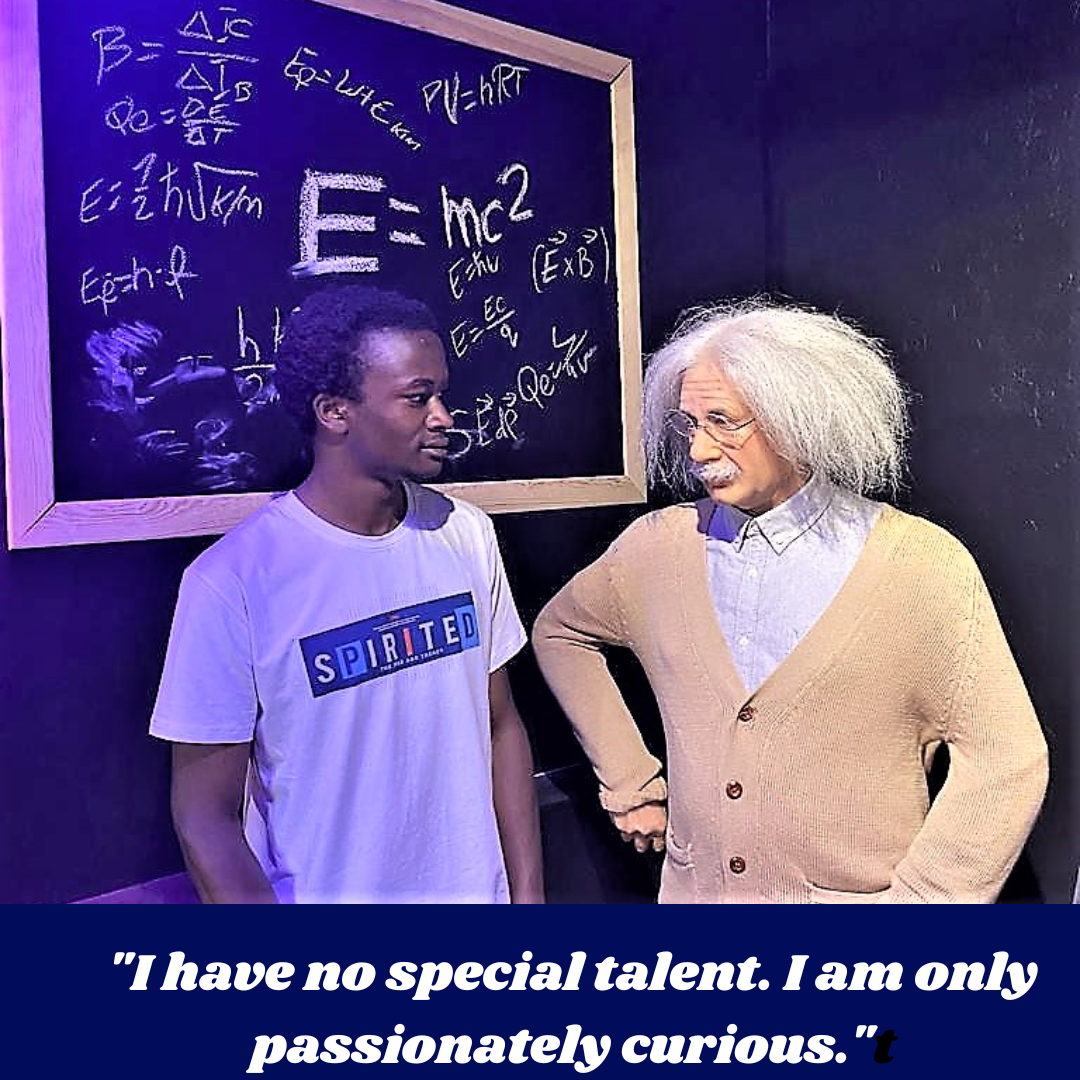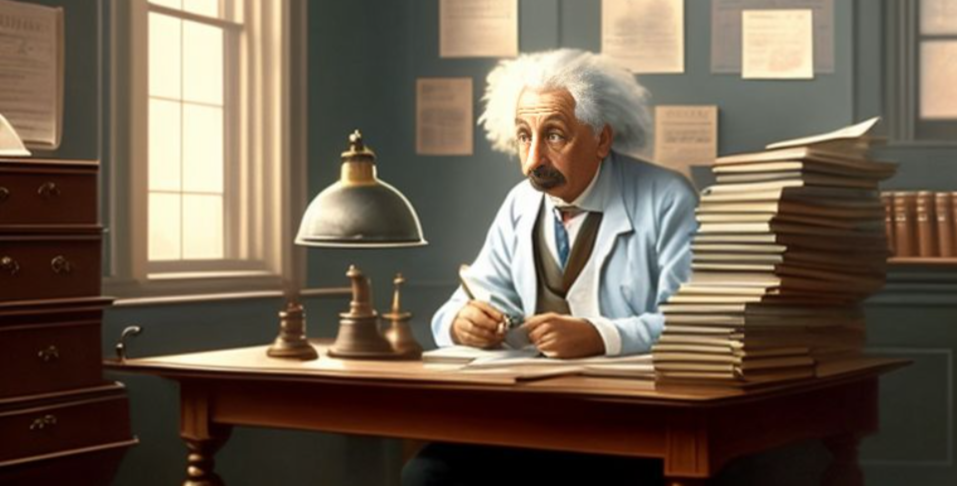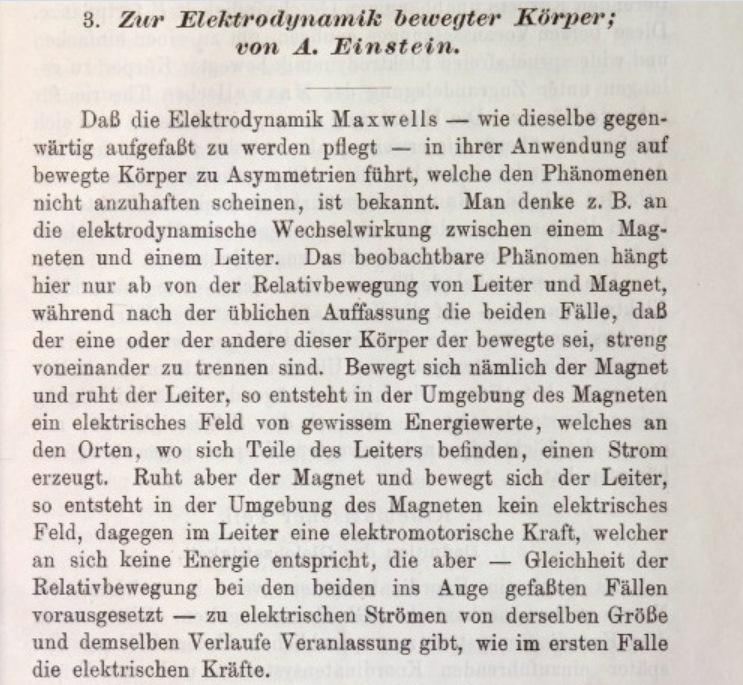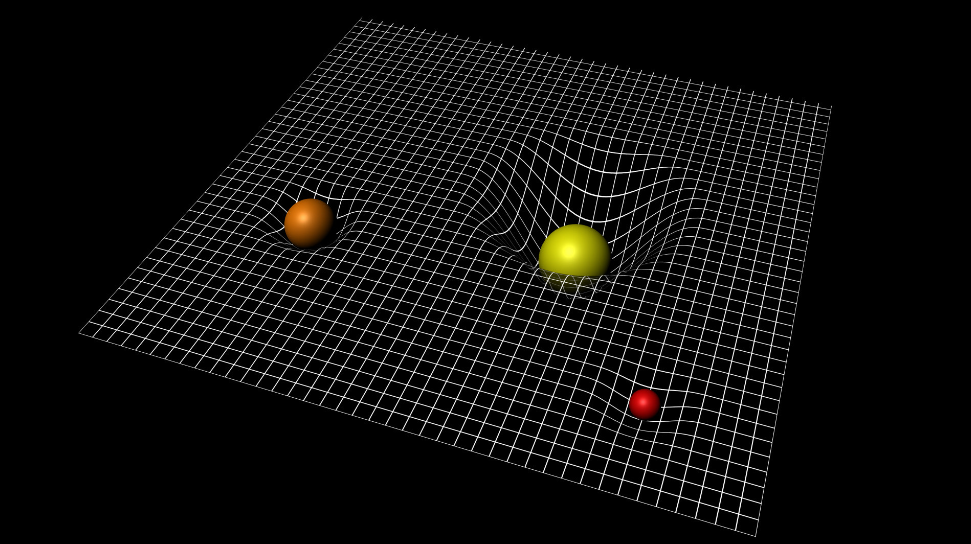The Einstein Way:Embracing Curiousity & Creativity
 Donald Koech
Donald Koech
For some he might have been a normal German born at a time when inventions were new but getting popular by the day,yet he wasn't.And would later change how we interact with Physics today. So how did he think,and what did he really study?
The Basics
At age 13,Albert Einstein had become a master of algebra,integral and differential calculus and over the next few years ,he would develop an interest in higher mathematics.One might argue the good education he got especially from the Swiss technical schools,but actually recorded history shows that he acquired most of his knowledge by teaching himself through reading books ,albeit with guidance from his tutor,Max Talmud.
As he got exposed to life outside books and classrooms,he developed interests in music and even philosophy,and naturally found his favorite philosopher at this time.
“If I were not a physicist, I would probably be a musician. I often think in music. I live my daydreams in music. I see my life in terms of music."
But how did he manage to balance all these while also preparing to be among the greats?
The Balancing Act
While his family moved a lot,it is not surprising that his background consisted of different perspectives,but one thing that was constant was his devotion to understand books and how the universe works.He would observe ordinary objects and run through his head what would happen in a certain condition.
"...at twelve, he was already confident that nature could be understood as a "mathematical structure."
He tried to focus as much as possible on physics and while at that,friends with similar interests came along and even had romantic relationships like a normal young lad would,but this really helped him share his understanding while borrowing angles of Physics and Mathematics. As recorded,this might have had impact on his accolades including the coveted Nobel Prize in the early '20s.
The Propulsion
During his time across Europe after graduation and while struggling for about a year to get a permanent job,he had an opportunity to work as an officer in charge of examining patents,simply someone who would check and verify applications for patents that came across his desk.

Fig.1 an AI illustration of Albert Einstein.
Many argue that this experience might have had a huge impact on his relentless search for answers about the universe that were not available yet;
1.The silence and serenity of his office which made it easier for him to focus all his thoughts,and as most of his youthful years,solitude was perfect to solve the kind of problems he had.
"There are certain occupations, even in modern society, which entail living in isolation and do not require great physical or intellectual effort. Such occupations as the service of lighthouses and lightships come to mind."
Albert Einstein,1933.
2.He might have borrowed ideas,thought channels and thinking trains from patents by the scientists of that time.
The Prize
By the start of the 20th century,Einstein had hit the ground running,using all the help and scientific background he could get to publish scientific papers.It was not until 1905,regarded as *annus mirabilis (miracle year) ,*that he published 4 groundbreaking papers as discussed later in the article.
Years later he would be a recipient of the Nobel Prize for Physics,probably at the height of his professional life,while also getting several other accolades and chances to meet and work with fellow great men and women.He gave speeches and lectures across the globe and could share tables with rulers of kingdoms,he even had an hand in making sure the US countered Germany's plans to create nuclear weapons!
In short,all along his work be it in Science and philosophy,Einstein made it a habit to do it all the way cushioned by his strong circle of friends,one being the Olympia Academy,one which would meet and talk Physics.
Their choice of a name for their club, the Olympia Academy, was an ironic comment upon its far from Olympian status....The thinkers whose works they reflected upon included Henri Poincaré, Ernst Mach and David Hume, all of whom significantly influenced Einstein's own subsequent ideas and beliefs.
Imagination and Thought Experiments
He had a way to write using his hand and mind alike.He wrote essays for fun and about what he thought was worth being read,one example being about how Rote learning,a system which learners learn by cramming formulae and methods,was an hindrance to creativity.
Even so;
Einstein had a vivid and imaginative mind. He was not afraid to explore unconventional ideas and question established theories. His ability to visualize complex concepts and thought experiments was a hallmark of his creative thinking.
Thought Experiments were his superpower: Einstein often used thought experiments, or "Gedankenexperiments," as a tool to explore hypothetical scenarios and grasp the implications of his theories. These mental exercises allowed him to analyze complex concepts without the need for elaborate experiments or physical observations.
Let's now look at his famous theory and how he came about it;
Special Relativity.
Electromagnetic Theory and Ether: Einstein's early studies in physics included a fascination with James Clerk Maxwell's theory of electromagnetism. At that time, the scientific community believed in the existence of a hypothetical "ether," a medium that was thought to be necessary for the propagation of electromagnetic waves.
The Speed of Light: One of the key concepts that intrigued Einstein was the speed of light. Maxwell's equations indicated that the speed of light is constant, and it was measured to be approximately 299,792 kilometers per second (about 186,282 miles per second) in a vacuum.
The Constancy of the Speed of Light: Einstein pondered the question of whether the speed of light would be the same for all observers, regardless of their motion relative to the source of light. This question challenged the prevailing Newtonian view of the universe, which assumed that time and space were absolute.
The Principle of Relativity: In 1905, at the age of 26, Einstein published the paper "On the Electrodynamics of Moving Bodies," which introduced the theory of special relativity. He presented two postulates: a. The laws of physics are the same for all observers in uniform motion relative to each other (Principle of Relativity). b. The speed of light is constant in all inertial reference frames.
The Lorentz Transformations: Based on these postulates, Einstein derived the Lorentz transformations, which describe how measurements of time, length, and mass change when observing objects moving at relativistic speeds.
Time Dilation and Length Contraction: The Lorentz transformations showed that time would appear to pass more slowly for objects moving at high speeds and that objects moving at high speeds would appear to be shorter in the direction of motion. These effects are known as time dilation and length contraction.
E=mc²: As a final step, Einstein realized that his theory implied that mass and energy are interchangeable. He famously derived the equation E=mc², which states that energy (E) is equal to mass (m) times the speed of light (c) squared.

fig.2 An extract from AE 1905 paper.
General Relativity
He didn't stop here,years after 1905,Einstein would face 'competition' from a fellow scientist David Hilbert,as well as the brewing WW1 to try to build up on the theory of Special Relativity towards an inclusive theory.
However he managed to put it up,and to summerize it(As widely explained);
Imagine the universe being a fabric,in which an heavy objects is at the centre.Consequently,a curvature is formed and smaller objects placed around such heavy ones are forced to follow a circular instead of straight motion,an effect widely termed as Gravity*.*
And there it was,Einstein added the effect of gravity to his earlier theory hence it became comprehensive and usable in all Physics situations.

fig.3 Space-time fabric.
The Impact
Global Positioning System (GPS): The GPS system, which we use for navigation and location-based services, relies on the principles of both special and general relativity. The satellites in the GPS constellation are moving at high speeds relative to the Earth's surface and are also in a weaker gravitational field. As a result, the clocks on the satellites experience time dilation, and corrections based on Einstein's theories are necessary to ensure precise GPS measurements.
Nuclear Energy: Einstein's famous equation E=mc² is fundamental to nuclear energy. It describes the conversion of a small amount of mass into an enormous amount of energy. Nuclear reactors and nuclear power plants use this principle to produce electricity through controlled nuclear reactions.
Particle Accelerators: Particle accelerators, such as the Large Hadron Collider (LHC), accelerate particles to relativistic speeds, where special relativity effects become significant. The principles of special relativity are crucial for understanding particle behavior at these high energies.
Spacecraft Trajectories: Space missions often require accounting for the relativistic effects of time dilation and gravitational forces. Both special and general relativity are considered when plotting spacecraft trajectories and planning interplanetary missions.
Quantum Field Theory: Einstein's theories of relativity are foundational in the development of quantum field theory, which combines quantum mechanics with special relativity and provides a framework for understanding the behavior of particles and their interactions.
Setbacks
Like every other Scientist,stuff doesn't always go right.Einstein's attempt to formulate a unified theory on how we would understand the universe did not materialize.
His work on nuclear energy would also have effects on world events,something he later mentioned to be a regret.
The Conclusion
Well,what a CV! Not only did he provide a solution to many challenges,he also mentored many,taught many and provided a standard in which we could all aspire to reach ,not only in Physics.And of course he gave us a simple but most famous and useful equation.Danke Albert!
Subscribe to my newsletter
Read articles from Donald Koech directly inside your inbox. Subscribe to the newsletter, and don't miss out.
Written by

Donald Koech
Donald Koech
Here to learn,write and contribute onnengineering and tech in general. Follow me on all channels.